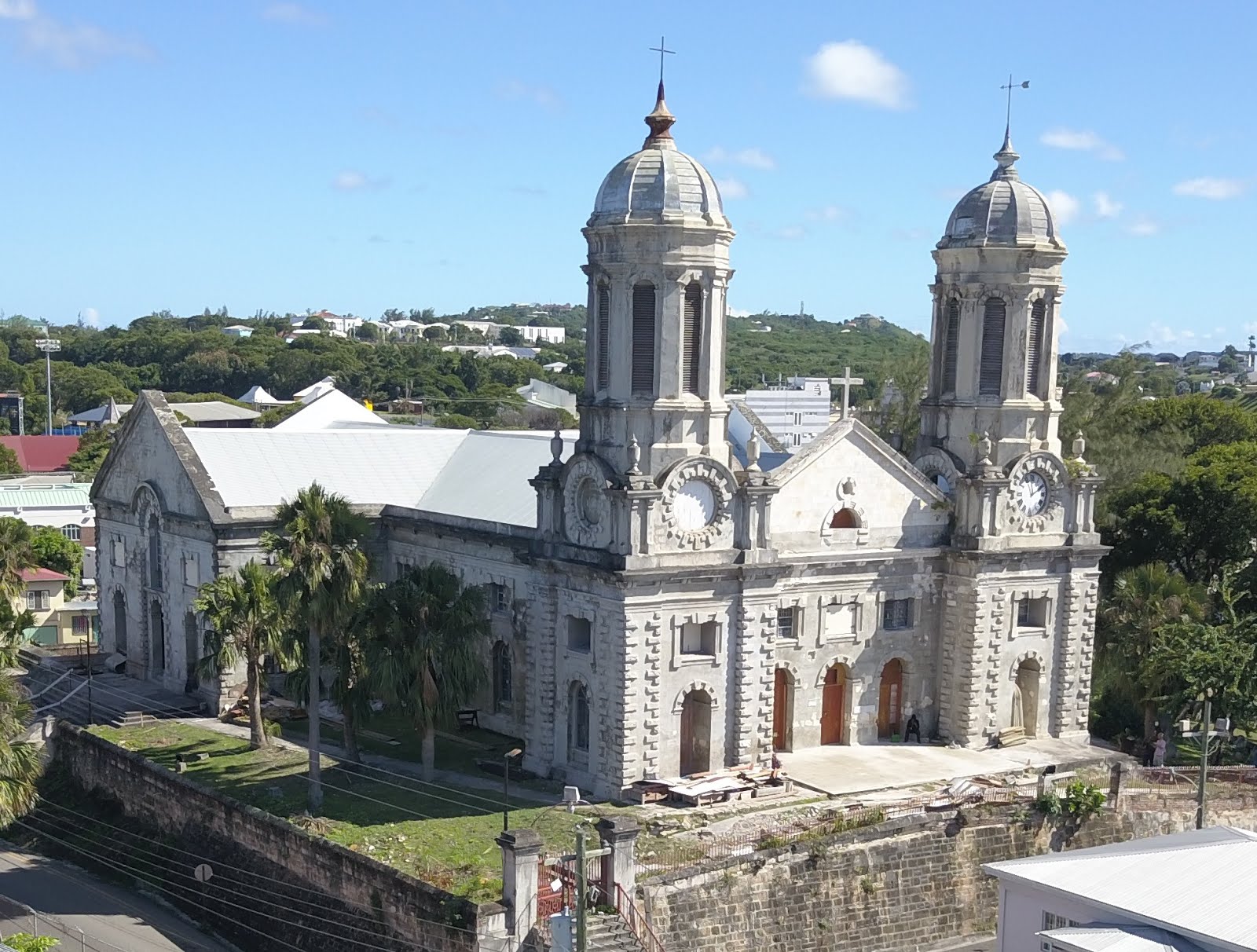 |
| Candelabrum in the 1990's |
"The Reverend Philip Darby, probably a former Curate of St. John's, by his will, dated 2nd May, 1740, bequeathed a sum of £30 to be used in purchasing a brass candelabrum to be given to the Parish Church of St. John by his executors. Owing to fear of fire, Evening Services were not allowed in the Cathedral until 1886. The candelabrum, however, was placed in the centre aisle of the old Parish Church.
 |
| Candelabrum prior to 1886 |
"The Vestry, on January 20th, 1848, authorised the sale of this candelabrum, but apparently no purchaser could be found. In 1861 the Government borrowed the candelabrum and installed it at the Court House on the occasion of a State Ball held there when Prince Alfred visited Antigua. There it remained until 1886, when Mr. William Forrest, a member of the Vestry, suggested that Bishop Branch should request the Government to restore it. Mr. Forrest at his own expense had it converted for use with lamps instead of candles. It was inadvisable to have lamps on all the branches of the candelabrum; the unnecessary ones were therefore used as bracket lamps, and at the time attached to the columns under the galleries. This candelabrum is said to be a very fine example of brass work, made in sections and fitted together. It is inscribed: The Gift of Mr. Philip Darby to the Parish Church of St. John's." (A. Layman, 1933, Antigua The Story of the Cathedral and Parish Church of St. John 1678-1932)
 |
| Candelabrum circa 1914 |
 |
| Missing branches as fixtures in the Sanctuary |
I am intrigued by the the picture of the the candelabrum in its original configuration to hold candles. Not only are we seeing a picture of it with all its branches but we are seeing an interesting ceiling in the background. I am trying to determine if this is the roof of the second church or the court house. That will determine if this picture was taken prior to 1843, when the second church was destroyed, or between 1861 and 1886 when it was hanging in the Court house. The picture came from Dean Baker's book, Three Hundred Years of Witness.
 |
The second church
|
 |
| Court House 1750 |




















